Penfound Manor - Inside Britain's Oldest Home
Many people will know from earlier articles that I am a keen family history researcher and have produced many dozens of family trees along with my own. My recent foray into carrying out a DNA test and receiving the results has opened up many new avenues, including as I mentioned a few weeks ago finding new cousins throughout the worldwide Cornish Diaspora. DNA is not only useful in finding new relatives, but also confirming existing lines that have been put together through documentary evidence. I am always keen to go beyond just a list of direct ancestors with baptisms, marriages and burials to try and find out more about the wider family, what they did for occupation, where they lived and the social history of the time.
This past week looking at lists of potential cousins, research led me to one set of great-great grandparents Thomas born in Poundstock and his wife Elizabeth born in Hartland, Devon. Now Elizabeth had a large proportion of Cornish ancestors some of whom originated in Poundstock and in particular Penfound Manor.
For those that may never have heard of Penfound Manor, it is believed to be the longest inhabited property in Britain, with parts of it stretching back to medieval times and built around a central Great Hall. Certainly, the site was occupied before the Norman Conquest and owned by Eddeva who held it during the reign of Edward the Confessor and subsequently by Briend who held ‘Penfou’ from the Robert Count of Mortain as Earl of Cornwall. Domesday also records that there was one virgate (virgate about 30 acres) and land for two ploughs, plus another plough with a serf and two bordars (an unfree peasant) There was two acres of meadow and ten acres of pasture. This was worth as assesses by the Domesday survey at 20 shillings per annum. Eddiva was the wife of King Edward and sister to Harold the last Saxon King of England.
The house at Penfound grew over a number of centuries with the original pre conquest and Norman buildings consisting of just the main hall, with a beaten earthen floor and a hole in the roof for a fireplace. Of this building only the 6’ thick north and west walls remain. The existing fireplace and chimney was added probably during the 1200’s when these were first used domestically, along with a west wing to the original house. In 1589 a further bedroom was added and an original stone spiral staircase in the earlier extension was replaced by timber. An east wing was added around 1400 for use as a buttery and during the period 1635-45 the most extensive improvements at any one time carried out adding a kitchen, bedroom and other works by Arthur Penfound. His initials together with his wife Sibella are engraved along with the inscription IN THE YEARE 1642 on the lintel in the new porch he built. Further improvements were carried out by the Penfound’s during the early 18th century and more during the 19th following their departure.
Of course, there has to be tales of a ghost in a building with so much history. During the English Civil War, when families and neighbours were split in their support of king or parliament, the Penfound’s were for the king and their neighbours the Trebarfoote’s for parliament. Kate Penfound and her lover John Trebarfoote wanted to marry, in normal times this would have no doubt been agreed, a previous marriage between the families having taken place. This was refused by Kate’s father Arthur, so one-night Kate climbed down from her bedroom window to elope with her lover John. As she reached the ground, they were caught by her father Arthur. A sword fight ensued resulting in John being killed along with Kate, stabbed accidently whilst trying to keep the men apart and her father dying later of his wounds. Kate’s ghost is said to haunt the house.
What of the Penfound family that took its name from the manor. Early documents show that they were an established family by 1346 during the reign of Edward III. Taken from the Feudal Aids listing that provides information relating to the succession of holders of land in the 13th, 14th, and 15th centuries there is mention as follows.
“De Nicholao de Penfoun et Alicia uxore sua pro di. parvi f. in Tregmedon, quod tenet ut de jure predicte Alicie, quod Matheus de Trethac quondam tenuit”
Roughly translated as, and illustrating the Penfound’s held land at Penfound in 1346
Nicholas and his wife Alice of Penfoun for their goods. small f. In Tregmedon which is held as of right to the aforesaid Alice once that Matthew of Trethac held.
When the heralds carried out the visitation in 1620, they were able to establish some eight past generations and further research has confirmed further early names and dates for members of the Penfound family. They had by the time of Elizabeth I established themselves as one of the chief gentry of Cornwall and had sent MP’s to parliament, as well as undertaking other important administrative roles. Certainly, the heyday of the Penfound family was during the 15th and 16th century and considerable landholdings were held far above what was recorded as part of the manor during the Domesday survey.
Sadly, one member of the family, a William Penfound, has achieved fame only by being hacked to death in front of a congregation during mass on 27th December 1357. The horror of this shook people far and wide and led to the Black Prince, as Duke of Cornwall, ordering the murderers arrest and incarceration in Launceston Castle. The men were also excommunicated by the Bishop of Exeter, probably less for the murder but for the desecration of the church and deprivation of the sanctity of the holy church. Williams ghost is said to still haunt St Winwaloe’s Church. As it happened the men got off with heavy fines after being found guilty of outlawry rather than murder and it appears to be a case of wealthy connections and cash rather than justice that ruled the day in court.
Although the Penfound’s maintained control of the Manor for nearly 500 years ultimately it was poor political choices that did for them. They suffered financially under parliamentary rule during the Commonwealth period through their support of Charles I. Following the death of Queen Anne in 1714 they supported the Stuart pretender in the uprising of 1715, and it was their Jacobean politics that led to them losing the manor. Ambrose Penfound was declared bankrupt in 1748 and died in 1764. Although The last of that direct line of Penfound died out in 1847, there are many hundreds of Penfound descendants in Cornwall and around the world. Besides those there are probably tens of thousands of other descendants who come from female lines but can still trace ancestors back to the early Penfound’s of Penfound.
Many of our ancestors have interesting stories and it is worth looking beyond the basic information and using the wealth of information available on the internet at first. Cornwall is now so fortunate to have first class facilities at Kresen Kernow in Redruth with its huge store of Cornish archives available for research purposes. Was your ancestor a mine owner? A master mariner? A yeoman farmer? Some great tales can be found using newspaper archives.
What more of the wider Penfound family and its own ancestors? Some of the Penfound daughters married well. For descendants of those marriages, with work and diligent research, it is possible to trace some family lines even further back through a series of gentry, nobles and minor royals to the major movers and shakers of medieval history.
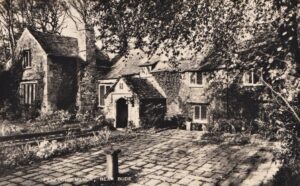
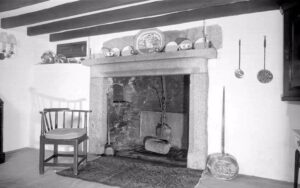
![Penfound Manor - Bedroom [1] Penfound Manor - Bedroom](https://www.cornwallheritage.com/wp-content/uploads/2020/12/Penfound-Manor-Bedroom-1-300x186.jpg)
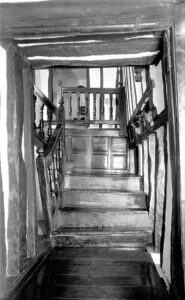
![Penfound Manor - Bedroom [2] Penfound Manor - Bedroom](https://www.cornwallheritage.com/wp-content/uploads/2020/12/Penfound-Manor-Bedroom-2-280x300.jpg)
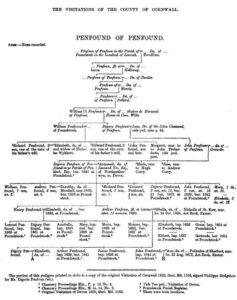
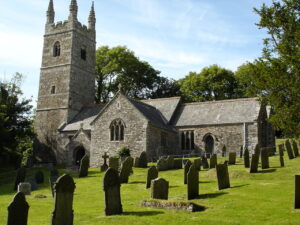
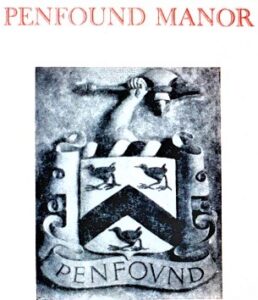
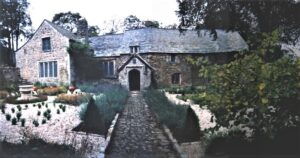
![[24] Voice - Ertach Kernow - Inside Britain's Oldest Home Ertach Kernow - Penfound Manor - Inside Britain's Oldest Home](https://www.cornwallheritage.com/wp-content/uploads/2020/12/24-Voice-Ertach-Kernow-091220A-Inside-Britains-Oldest-Home-S-232x300.jpg)
![[24] Ertach Kernow - Inside Britain's Oldest Home Ertach Kernow - Penfound Manor - Inside Britain's Oldest Home](https://www.cornwallheritage.com/wp-content/uploads/2020/12/24-Voice-Ertach-Kernow-091220B-Inside-Britains-Oldest-Home-S-230x300.jpg)